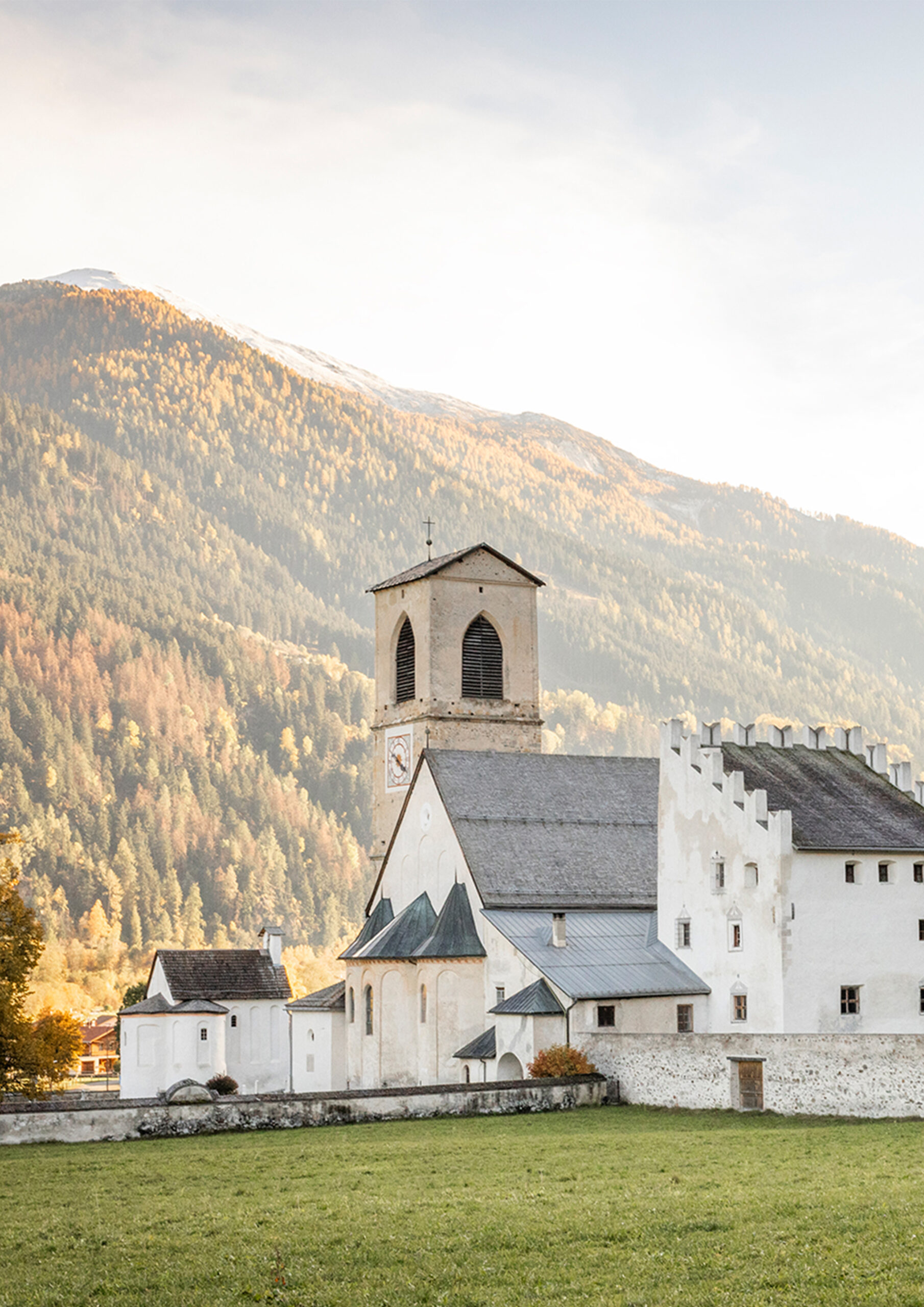
MUSEUM Benedictine Convent of St. John at Müstair
The UNESCO World Heritage Monastery of St. Johann in Müstair has been a Benedictine monastery for 1250 years. It was probably founded in Müstair in 775 by Charlemagne. Since the second half of the 12th century at the latest, a Benedictine community of women has shaped the town and its architectural appearance. Even today, the convent consists of eight nuns who live their lives according to the Rule of St. Benedict. The museum, founded in 2003, reflects the life of the community as well as 1250 years of important architectural history and object culture. It is located in the so-called Plantaturm, the oldest residential and fortified tower in the Alpine region, and provides insights into rooms of monastic life, including the cloister, refectory, dormitory and the so-called nuns’ cells. In the adjoining archaeological archive, selected finds from over 25,000 archaeological objects can be viewed on guided tours.
Inner life
Life in a religious community is a marginal phenomenon in a secular society. Cloistered rules and a rhythmic daily routine determine the everyday life of the women’s community in Müstair Monastery, where men are only admitted in exceptional cases. As part of the project “A Future for whose past?” for the Year of Monument Protection 2025, the monastery museum is focusing on the Benedictine nuns behind the monastery walls in two exhibitions. With the exhibitions INNENLEBEN and IN PERSONA, the UNESCO World Heritage Site puts the women and their personal experiences in the spotlight. By means of personal objects, letters, their own artistic works and touching interview sequences, existing assumptions and prejudices are put into perspective and new points of view are offered.
IN PERSONA. The sisters of Müstair and their favorite objects (muestair.ch)




